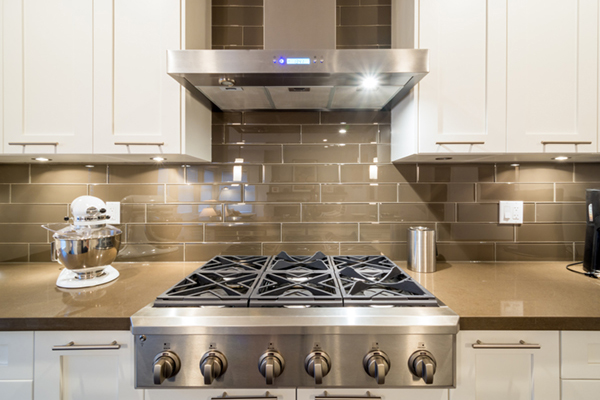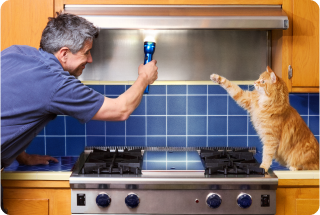Buying a New Range Hood? It's All About the CFM

It's okay if you're not sure what it means. We've broken it all down in five easy tips so that you can determine how much CFM is right for your kitchen.


It's okay if you're not sure what it means. We've broken it all down in five easy tips so that you can determine how much CFM is right for your kitchen.
When you’re cooking, smoky flavors are often a welcome addition to a tasty meal. But a smoky kitchen? Never welcome. That’s why kitchen range hoods are so important, as they remove smoke, odors, and excessive moisture from your kitchen. But to be effective, you need a range hood that moves enough air. Just as you need a heating system that generates proper airflow. How do you determine this? Through CFM, or Cubic Feet Per Minute.
What is CFM?
CFM is a measure of airflow, commonly used to describe the capabilities of heating, ventilation, and air conditioning systems.
How many CFM do you need?
First, keep in mind that one with too few CFM won’t provide adequate ventilation, and one with too many won’t be energy efficient as the range hood will pull too much air from your kitchen. Sounds confusing, but don’t worry – with a little help, you’ll come to a CFM range that’s right for your needs.
Thinking about coverage?
Sounds like a plan. Find the warranty that fits you best.
3. Determine the recommended ventilation based on your kitchen's size. The HVI recommends that your range hood should be capable of cycling the air in your kitchen completely 15 times per hour.
- Start by measuring the floor area of your kitchen. In a rectangular-shaped room, this can be done by multiplying the width and length. For example, a 10-foot x15 foot kitchen has a floor area of 150 square feet.
- Calculate the total volume of your kitchen by multiplying the floor area by the ceiling height. For example, if a kitchen has 150 square feet of floor area and a ceiling height of 8 feet, the total volume is 1,200 cubic feet
- Divide the total volume by 4 to get the required CFM rating. A kitchen with a volume of 1,200 cubic feet would need a range hood with a rating of 300 CFM.
4. Add more CFM based on ductwork. Add nine additional CFM for a 9-foot duct and 25 CFM for every elbow bend encountered. (A curved, rigid piece used in ductwork installation.)
5. Choose the greatest of the above guidelines to determine your CFM requirement. Compare the numbers and size your range hood based on the highest number of the three (heat output, range size, kitchen size.) Don’t forget to add the value of Step 4 to the highest number.
Now that you know how to calculate CFM, you can purchase a range hood that generates the right amount of airflow to keep your kitchen clean and smoke-free.
SOURCES:
http://www.wikihow.com/Calculate-CFM-for-Range-Hoods
http://www.todayshomeowner.com/how-to-calculate-kitchen-range-hood-fan-size/
http://www.houzz.com/ideabooks/64500347/list/what-to-consider-when-adding-a-range-hood
A protection plan keeps your home well-ventilated with built-in exhaust fan coverage.

AHS assumes no responsibility, and specifically disclaims all liability, for your use of any and all information contained herein.
Have a plan for your home when things don't go according to plan
Shop Home Warranties